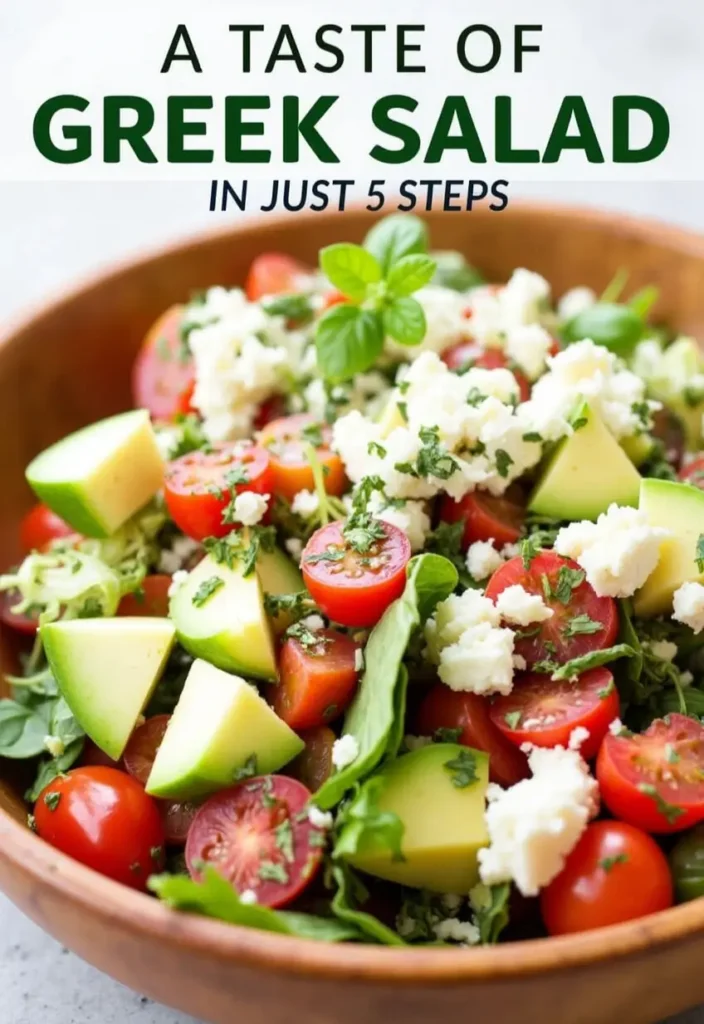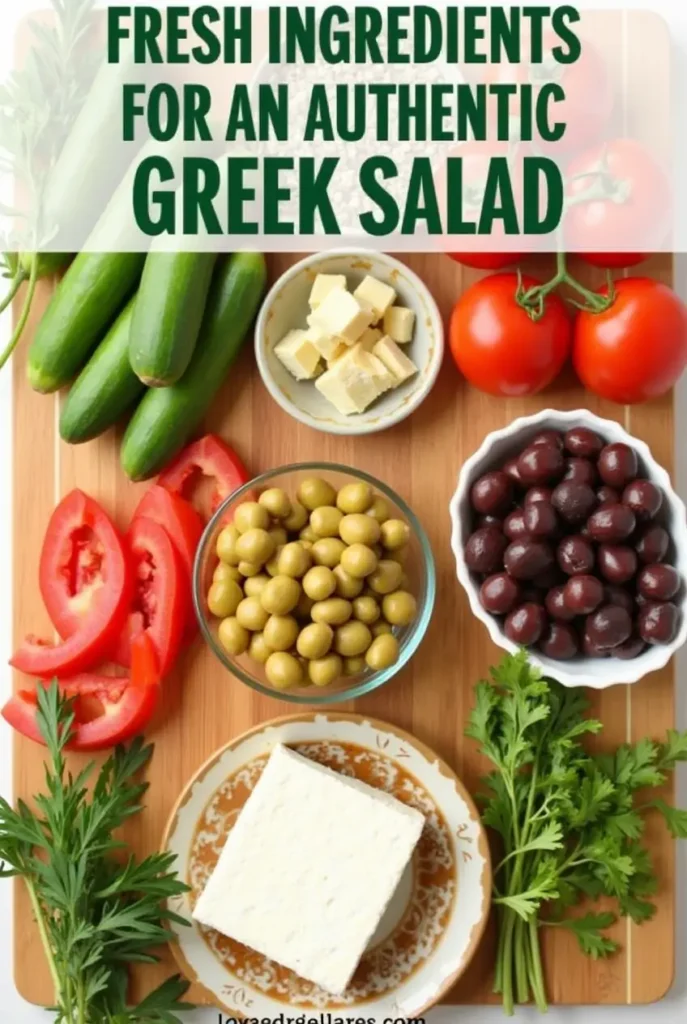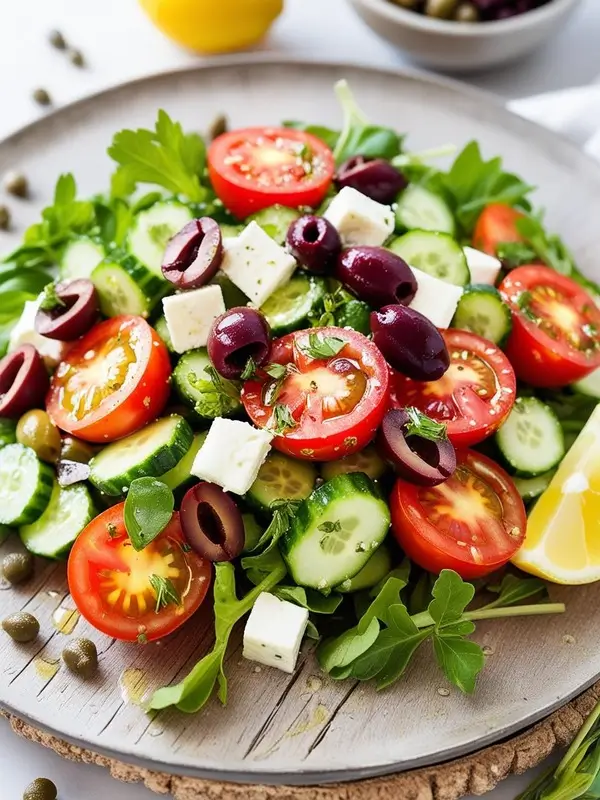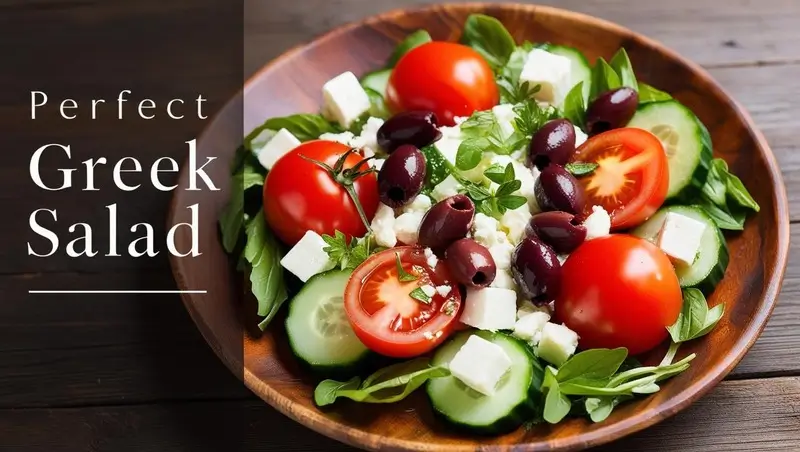Greek salad is a timeless dish that has earned its place as a cornerstone of Mediterranean cuisine. Its simplicity, vibrant flavors, and health benefits make it a go-to choice for anyone looking to enjoy a light yet satisfying meal. What sets this easy Greek salad recipe apart is its accessibility—whether you’re a seasoned chef or a beginner in the kitchen, this dish can be prepared in just five straightforward steps.
The beauty of this recipe lies in its minimalistic approach. Unlike other salads that require complex dressings or exotic ingredients, this Greek salad relies on fresh produce like crisp cucumbers, juicy cherry tomatoes, and tangy Kalamata olives. These ingredients not only provide a burst of flavor but also ensure that the dish remains nutritious and wholesome.
As Julia Child once said, “You don’t have to cook fancy or complicated masterpieces—just good food from fresh ingredients.” This philosophy perfectly encapsulates the essence of a Greek salad.
Another standout feature of this recipe is its versatility. Whether you’re hosting a summer barbecue or preparing a quick weekday lunch, this salad fits seamlessly into any occasion. For those who love experimenting with flavors, you can pair it with our Creamy Cajun Chicken recipe for a protein-packed meal. Or, if you’re craving something heartier, try serving it alongside a Ground Beef Stir-Fry for a fusion-inspired dinner.

Key Ingredients for an Authentic Greek Salad
The secret to a truly authentic Greek salad lies in its ingredients. Each component plays a crucial role in creating the perfect balance of flavors and textures. Let’s dive into the key players that make this dish so irresistible.
Crisp Cucumber Slices and Juicy Cherry Tomatoes
Cucumbers and tomatoes are the backbone of any Greek salad. Their refreshing crunch and natural sweetness provide the foundation for the dish. When selecting cucumbers, opt for English cucumbers if possible—they’re less watery and have thinner skins, making them ideal for salads. Similarly, cherry tomatoes add a pop of color and juiciness that complements the crispness of the cucumbers. Together, these vegetables create a harmonious base that’s both satisfying and hydrating.
Tangy Kalamata Olives and Creamy Feta Cheese
No Greek salad is complete without the iconic duo of Kalamata olives and feta cheese. Kalamata olives bring a rich, briny flavor that cuts through the sweetness of the tomatoes, while feta cheese adds a creamy, salty contrast. Feta, made from sheep’s milk or a combination of sheep and goat milk, is a staple of Greek cuisine. Its crumbly texture and bold taste elevate the salad to new heights. For a dessert pairing, consider baking some Baked Apple Fritters to balance the savory notes of the salad.
Fresh Oregano and Olive Oil Dressing
The dressing is where the magic happens. A simple mix of extra virgin olive oil, freshly squeezed lemon juice, and dried oregano ties all the ingredients together. Olive oil, a cornerstone of the Mediterranean diet, not only enhances the flavors but also provides heart-healthy monounsaturated fats [1]. Fresh oregano, with its earthy aroma, adds an authentic Greek touch that store-bought seasonings simply can’t replicate.
Optional Add-Ins for Variety
While traditional Greek salad recipes stick to the basics, feel free to get creative. Adding sliced red bell peppers or capers can introduce additional layers of flavor and texture. For inspiration, check out our Ground Beef Stir-Fry recipe, which pairs beautifully with this salad for a complete meal.
Nutritional Breakdown of Key Ingredients
| Ingredient | Calories (per 100g) | Key Benefits |
|---|---|---|
| Cucumber | 16 | Hydration, low-calorie |
| Cherry Tomatoes | 18 | Rich in vitamin C |
| Kalamata Olives | 115 | High in healthy fats |
| Feta Cheese | 253 | Good source of calcium |

How to Make This Easy Greek Salad in 5 Steps
Now that you know the key ingredients, let’s walk through the step-by-step process of making this delicious Greek salad. With just five simple steps, you’ll have a restaurant-quality dish ready in no time.
Step 1 – Chop the Vegetables
Start by washing and chopping your vegetables. Slice the cucumbers into thin rounds and halve the cherry tomatoes. Peel and thinly slice the red onion to add a mild sharpness to the salad. The uniformity of your cuts will enhance the presentation and ensure even distribution of flavors.
Step 2 – Add Feta Cheese and Olives
Once your vegetables are prepped, transfer them to a large mixing bowl. Crumble the feta cheese over the top and scatter the Kalamata olives evenly throughout. The creamy texture of the feta contrasts beautifully with the crisp vegetables, creating a satisfying mouthfeel.
Step 3 – Prepare the Dressing
In a small bowl, whisk together three tablespoons of extra virgin olive oil, one tablespoon of freshly squeezed lemon juice, and a pinch of dried oregano. Season with salt and pepper to taste. This simple dressing allows the natural flavors of the ingredients to shine without overpowering them.
Step 4 & 5 – Toss and Serve
Gently toss the salad to combine all the ingredients and coat them with the dressing. Be careful not to overmix, as you want to preserve the integrity of the vegetables. Serve immediately for the freshest taste, or chill for 10–15 minutes to allow the flavors to meld.
As Chef Jamie Oliver puts it, “Cooking is all about people. Food is maybe the only universal thing that has the power to bring everyone together.” This Greek salad is the perfect dish to share with family and friends, whether paired with Creamy Cajun Chicken or enjoyed on its own.

Why This Greek Salad is Perfect for a Healthy Lifestyle
Incorporating Greek salad into your diet is an excellent way to support a healthy lifestyle. Packed with nutrient-rich ingredients, this dish offers numerous health benefits that align with modern dietary trends.
Low-Calorie and Nutrient-Rich
With its abundance of fresh vegetables, this salad is naturally low in calories while being rich in essential vitamins and minerals. Cucumbers and tomatoes provide hydration and antioxidants, while Kalamata olives contribute healthy fats [2]. Together, these ingredients make the salad a guilt-free option for weight management.
Rich in Heart-Healthy Fats from Olive Oil
Extra virgin olive oil is a key component of the Mediterranean diet, known for its cardiovascular benefits. Studies have shown that consuming olive oil regularly can reduce the risk of heart disease by lowering bad cholesterol levels [3]. By using olive oil in your dressing, you’re not only enhancing the flavor but also boosting your heart health.
Gluten-Free and Customizable Options
This Greek salad is naturally gluten-free, making it suitable for those with dietary restrictions. For vegans, simply substitute the feta cheese with a plant-based alternative. Pair it with our Baked Apple Fritters for a balanced meal that satisfies both savory and sweet cravings.
Ideal for Meal Prep
One of the best things about this salad is its adaptability for meal prep. Prepare the ingredients ahead of time and store them separately to maintain freshness. When ready to eat, simply toss everything together and enjoy.
Health Benefits of Key Ingredients
| Ingredient | Benefit | Source |
|---|---|---|
| Olive Oil | Reduces heart disease risk | Harvard Health |
| Tomatoes | High in lycopene (antioxidant) | WebMD |
| Feta Cheese | Supports bone health | Medical News Today |

Tips and FAQs for Making the Best Greek Salad
To help you perfect your Greek salad, here are some tips and answers to frequently asked questions.
Can I Make This Salad Vegan?
Yes! Simply replace the feta cheese with a vegan alternative made from tofu or cashews. This swap ensures the salad remains cruelty-free while retaining its creamy texture.
How Long Does Greek Salad Stay Fresh?
When stored properly in an airtight container, Greek salad can stay fresh in the refrigerator for up to two days. However, for the best taste and texture, it’s recommended to consume it within 24 hours.
What Pairs Well with Greek Salad?
For a complete meal, pair the salad with protein-rich dishes like Creamy Cajun Chicken or Ground Beef Stir-Fry. Alternatively, serve it with warm pita bread for a classic Greek experience.
Common Mistakes to Avoid
Avoid overdressing the salad, as too much oil can make it soggy. Additionally, always use high-quality ingredients—fresh produce and authentic feta cheese make a world of difference.
Common Mistakes and Solutions
| Mistake | Solution |
|---|---|
| Overdressing the salad | Use dressing sparingly; toss gently |
| Using low-quality feta | Opt for authentic Greek feta |
| Skipping fresh herbs | Always use fresh oregano for flavor |
Conclusion
Greek salad is more than just a dish—it’s a celebration of simplicity, freshness, and flavor. With this easy recipe, you can bring the taste of Greece to your table in just five steps. Whether you’re enjoying it as a standalone meal or pairing it with Baked Apple Fritters for dessert, this salad is sure to delight your taste buds.
As you experiment with this recipe, remember the words of M.F.K. Fisher: “First we eat, then we do everything else.” So gather your ingredients, follow these steps, and savor the joy of a perfectly crafted Greek salad.

